7+ SAMPLE Business Memo
-
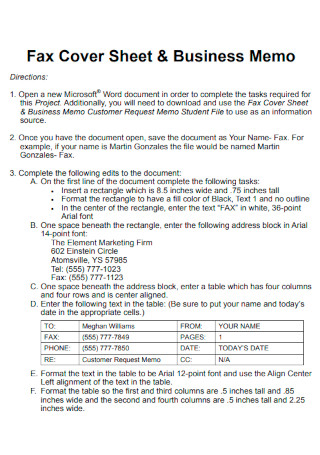
Fax Cover Sheet & Business Memo
download now -
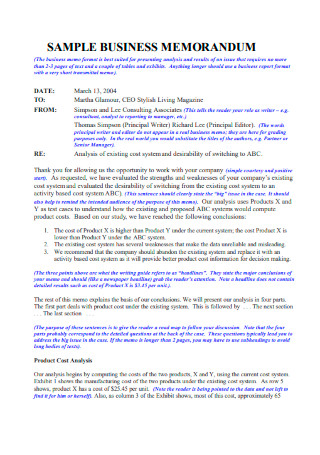
Sample Business Memo
download now -
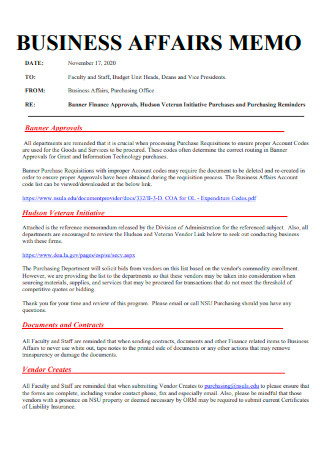
Business Affairs Memo
download now -
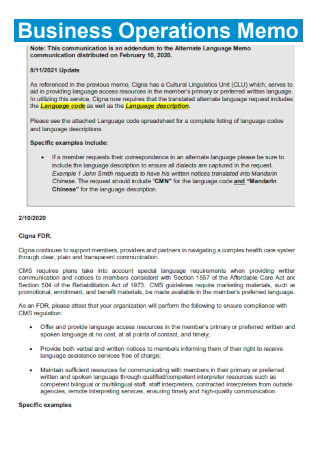
Business Operations Memo
download now -
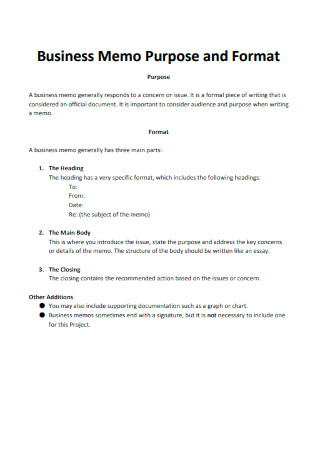
Business Memo Purpose and Format
download now -
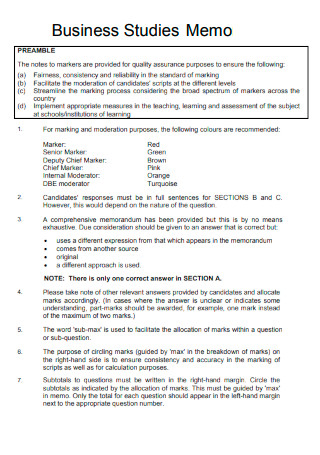
Business Studies Memo
download now -
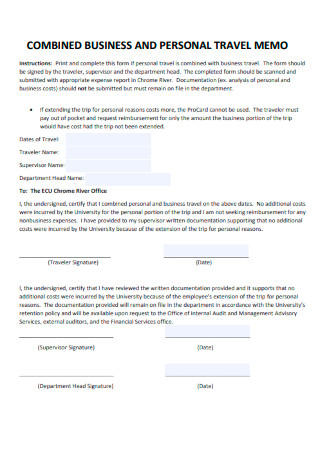
Combined Business & Personal Travel Memo
download now -
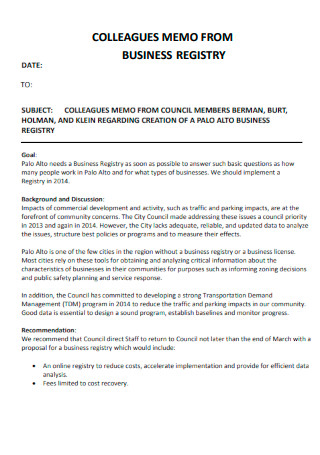
Colleagues Memo From Business Registry
download now
FREE Business Memo s to Download
7+ SAMPLE Business Memo
a Business Memo?
Benefits of a Business Memo
Elements of a Business Memo
Tips To Create a Business Memo Efficiently
How To Write A One-Page Executive Memo
FAQs
How should a note be formatted properly?
What information do you include in a memo?
What is the optimal number of paragraphs for a memo?
What Is a Business Memo?
A business memo is an internal, instructive document used in business. Business memos are similar to internal press releases; they are perfect for immediately communicating critical information to many people, frequently at the same time. While business memos are less formal than business letters, their language should be professional and polite—mainly when they include any action items for the intended recipient. Memos can be used to address business issues and to announce remedies. Unlike business proposals or business cases, a business memo’s objective is not to obtain approval for a proposed solution; the solution described in a memo should already be approved. The memo’s goal is to indicate that it is time to implement a solution and provide instructions on how to do so. Memos are most effective when dealing with a particular topic or change at a time. According to statistics, 52% of respondents responded that the most significant issue facing small firms was labor quality.
Benefits of a Business Memo
Business memos are professional communication documents used by most firms. They are usually sent as physical copies, but they can also be sent online. These agreements, which have been in use for over a century, are necessary to organizations for six primary reasons and have advantages as a communication tool.
Elements of a Business Memo
You may be required to produce four different types of memos, each with its organizational structure: information, problem-solving, persuasive, and internal memo proposal. If you’re interested, the following is a description of it.
Tips To Create a Business Memo Efficiently
Business memos date back to the early nineteenth century. What accounts for their tenacity? They are effective. Even in an age of immediate communication and e-mailing, business memos remain a standard method of communicating formally inside an office context. They attract greater attention and are retained longer than a conventional e-mail. The key to producing a practical business memo is to communicate your ideas or message as plainly and succinctly as possible. Whether your memo contains information on a bit of plumbing issue in the workplace or a significant leadership shift, you’ll need to understand how to write a business memo correctly so that busy employees can readily read and understand it. This section will provide you with five bits of advice on producing a more effective business memo.
1. Recognize Your Audience
When writing anything business-related, the first lesson is to understand your audience. Writing a memo for your colleagues will differ from writing one for your supervisors. Additionally, exercise caution when writing to a large group of people and ensure that you communicate in a manner that everyone understands. Steer clear of technical jargon. Maintain a friendly yet professional demeanor. Finally, exercise caution when including sensitive or personally identifiable information in your memo. In some instances, a message may appear harsh or exacerbate a situation. Bear in mind that sometimes the most effective mode of communication is still a simple phone call or in-person encounter.
2. Indicate the Purpose of Your Memo
A good business memo is concise and direct. Business memos are not meant to be lengthy informational pieces. Consider which subjects and topics are most significant to your recipients, and begin your memo by emphasizing those components. Most readers value conciseness when reading business notes, so make your point swiftly. If you’re sending a memo to a large group of people—businesspeople who are already busy with other tasks—they’ll want to know whether your memo is something they should pay attention to. Most people will judge whether or not to read your memo based on its subject line, so ensure you include all pertinent information in the memo’s purpose and subject line. After you’ve followed these suggestions for writing a business memo and written your message, the best course of action is to have your memo professionally checked and edited.
3. Only attach Appropriate Data
You should include only the necessary information. Attach any lengthy forms or papers to the memo so that your readers can refer to them for further details if they like. If you’re asking all employees to complete a survey questionnaire, the memo can outline the goal of the survey and how the data will be used to benefit them—and then offer the basic form as an attachment.
4. Employ an Appropriate Tone
Business memos should be assured and succinct. However, it would help to analyze your memo’s intended audience and topic before selecting a suitable tone to express your message. Sending a message with an incorrect tone can be just as perplexing and ineffective as sending a note with inaccurate material. In any event, maintain a straightforward, efficient, and businesslike manner throughout your memo.
5. Proofread Thoroughly
The final tip for effectively writing a business memo is to ensure that your memo reads and sounds its best. Since most memos are brief, there is a tendency to rush through the proofreading process. This is a frequent error made by many people, and as we all know, haste has consequences. Typos, misspelled words, grammatical faults, and other flaws can detract from the effectiveness of your message. Additionally, these blunders reflect a lack of care and expertise. Therefore, proofread your business memo carefully, slowly, and aloud.
How To Write A One-Page Executive Memo
Executives are accountable for the organization’s major decisions. While they may have a general awareness of current company issues, they may be unfamiliar with the specifics of a particular effort. A memo is a document used to provide critical information on a specific project. With numerous competing objectives for an executive’s time, you must build a product that is easily digested and acted upon. Five points to keep in mind while writing a quick message for an executive:
1. Identify the information that the reader requires.
Consider, “What information does this person require right now?” Concentrate on the most crucial facts. Is it necessary for the chief product officer to be aware of product issues? Is it essential for the vice president of communications to be mindful of potential public relations difficulties arising from another department’s decision? Should the general counsel be briefed on new compliance initiatives necessitated by newly enacted legislation?
2. Utilize sections and distinct headings.
Create a headline for the executive. Logically organize the memo’s body. You might utilize the STAR approach to organize your thoughts: circumstance, task, action, and result. You might employ the IRAC technique, which stands for issue, rule, analysis, and conclusion. Alternatively, use another common-sense framework that focuses on the subject, gives pertinent background information, communicates the present state of affairs, incorporates a couple of questions, and suggests next steps. There is no one-size-fits-all method for structuring a memo. Utilize sections to aid the reader in comprehending the message. Using clear headings is one technique to ensure that a message is easy to grasp. Additionally, clear titles enable the reader to read the sections they like. A well-organized and written memo gives the reader the freedom to read the document in any way they want.
3. Utilize brief paragraphs and bullet points.
Utilize brief paragraphs to assist the reader in digesting the information you are delivering. The paragraph is more difficult to follow the longer it goes. Bullet points are also an excellent approach to direct the reader’s attention to the digestion of specific pieces of information.
4. Include the date and your contact details.
If a member of leadership wishes to obtain additional information, they should be aware of who to contact through phone or e-mail. Include your name and e-mail address. Include a date at the bottom of the document. Suppose the executive comes to a message later that day and misinterprets a previous memo. In that case, their actions that day may be based on outdated information, which could have substantial, unintended effects.
5. Reread your work.
Unclear writing and misspellings reflect poorly on you as a professional. Spend a few moments reading what you wrote. Consider reading the message aloud or from beginning to end. Simple blunders can detract from the substance of your work and harm your reputation. Capturing crucial information is a critical skill to learn. You have the potential to communicate with and influence the senior management of an organization. Determine the facts that your audience requires to make a decision. Utilize sections and write small paragraphs to break up the page. Include the date and your contact details. Then proofread your content to ensure there are no typos.
FAQs
How should a note be formatted properly?
The format of a memo is consistent with the conventions of business writing. Typically, a note is one or two pages long, single-spaced, and left-justified. Leave a line blank between sentences rather than using indentations to indicate new paragraphs. Business correspondence should be concise and easy to read.
What information do you include in a memo?
A memo is divided into two sections: the header information and the message itself. At the top, indicate who wrote the memo, who sent it, the subject, and the date. The subject line determines the memo’s title.
What is the optimal number of paragraphs for a memo?
Keep sentence and paragraph lengths brief in memos that convey requests or announcements. Sentences should be no longer than twenty words, and paragraphs should be no longer than seven lines in length. Additionally, keep the memo’s size to less than one page.
A well-written memo ensures that solutions are executed smoothly; a poorly written memo may result in miscommunications, substantial setbacks, or failure. Investing in successful communication is an investment in the future of your business. If you’re ready to build your business memo, review the templates above to find one that works for you and your intended business memo.
